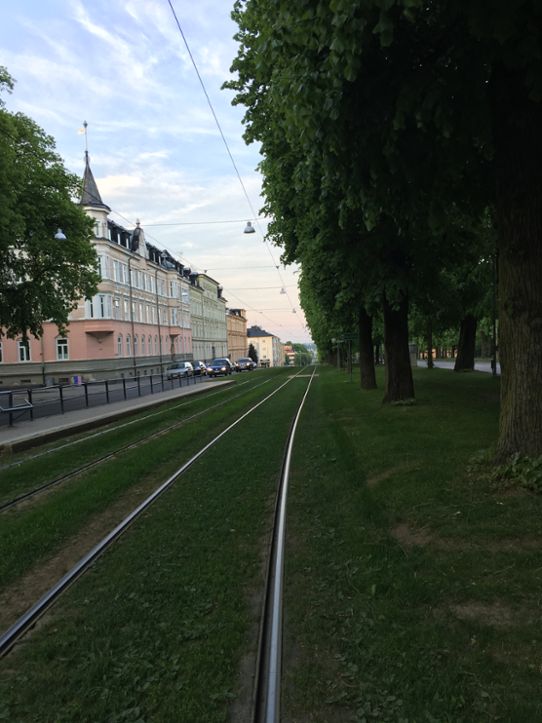Green surfaces in the city contribute to improved air quality, greater chances of dealing with surface runoff, a milder microclimate, improved conditions for strengthening biodiversity and an improved living environment for humans. During the 1980s and 90s, it became popular among European cities to lay grass around tram tracks. The grass reduces noise, increases the potential to deal with storm water, most likely has a cooling effect around the tracks and reduces wear and tear on the rails. The alternative of using gravel gives the urban environment a more railway-like character and the tracks are perceived as a barrier.
Grass tracks in Norrköping

There are two tram lines in the public transport system in Norrköping, with the first section of grass tracks having been built in the 1990s. The primary purpose of this change was aesthetic; a greener urban environment is perceived as more pleasant. When new sections are built or worn-out tracks are replaced, grass is laid where the tram has its own track bed and is not mixed with other traffic. This strategy is to be seen as a complement to the city’s work with green structures. The traffic planners see the grass tracks as a local measure that can contribute to the municipality keeping under the guideline levels for noise in the built environment.
Grass tracks in Gothenburg
Gothenburg is also working on integrating green structures around tram tracks. Various types and designs with turf and sedum plants have been tested. The main purpose is to suppress noise. The aesthetic effect is seen as an added benefit. The area between the rails is kept free of vegetation as this reduces the running costs and is seen as creating aesthetic sight lines.
Costs
The running cost of the grass tracks in Norrköping is estimated at SEK 480 per metre of track per year. This includes watering, mowing, clearing and any planting. The cost is higher than that of asphalt or gravel, but the City Planning assesses that the higher running cost is a long-term investment.
More examples of climate adaptation
This is one of many examples of climate adaptation. There are more in the collection of ideas being built up by the Swedish National Knowledge Centre for Climate Change Adaptation at the Swedish Meteorological and Hydrological Institute (SMHI). The collection of examples has the aim of sharing experiences and providing ideas to everyone who works with climate adaptation. Examples describe concrete measures and challenges in several subject areas. They show how different actors have worked to adapt their activities to the climate changes that are already being noticed today and those that we cannot prevent in the future.